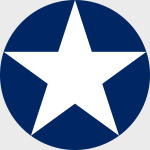Hobby Master HA8910 US Navy Grumman F4F-4 Wildcat Fighter - "White 19", Lt. Swede Vejtasa, VF-10, USS Enterprise (CV-6), October 1942 (1:48 Scale)
"Skipper, it really worked. I couldn't make any attack without seeing the nose of one of your airplanes pointed at me."
- Ensign Edward "Butch" O'Hare discussing the newly-developed "Thach Weave" maneuver with Lt. Commander John Thach
 The Grumman F4F Wildcat was the standard carrier-based fighter of the United States Navy for the first year and a half of World War II. An improved version built by General Motors (the General Motors FM Wildcat) remained in service throughout the war, on escort carriers where newer, larger and heavier fighters could not be used.
The Grumman F4F Wildcat was the standard carrier-based fighter of the United States Navy for the first year and a half of World War II. An improved version built by General Motors (the General Motors FM Wildcat) remained in service throughout the war, on escort carriers where newer, larger and heavier fighters could not be used.
The Wildcat was outperformed by the Mitsubishi Zero, its major opponent in the Pacific war, but held its own by absorbing far more damage and wielding more firepower. With heavy armor and self-sealing fuel tanks, the Grumman airframe could survive far more than its lightweight, unarmored Japanese rival.
The original Grumman F4F-1 design was a biplane, which when proving inferior to rival designs was recast as the monoplane F4F-2. This was still not competitive with the Brewster F2A Buffalo which won initial US Navy orders, but when the F4F was fitted with a more powerful engine, the Pratt & Whitney Twin Wasp, it showed its true merits and became the F4F-3. US Navy orders followed as did some (with Wright Cyclone engines) from France; these ended up with the Royal Navy's Fleet Air Arm after the fall of France. In British service initially these were known as the Martlet I, but not all Martlets would be to the exact same specifications as US Navy aircraft. The F4F-3A would enter service as the Martlet III(B), the FM-1 as the Martlet V, and the FM-2 as the Martlet VI. The name Wildcat was still commonly used for these aircraft in spite of the official name change.
A new version, the F4F-4, entered service in 1942 with six guns and folding wings, allowing more to be crammed on a carrier; this was the definitive version and the one that saw the most combat service in the early war years including the Battle of Midway.
Grumman production ceased in early 1943 to make way for the newer F6F Hellcat, but General Motors continued producing them for both US Navy and Fleet Air Arm use, as larger fighters such as the Hellcat and the Vought F4U Corsair were too large for use on escort carriers. At first they produced the identical FM-1 model but then switched to the improved FM-2 (based on Grumman's F4F-8 prototype) with a more powerful engine and a taller tail to cope with the torque. In all, 7,251 Wildcats were built.
All versions of the Wildcat used hand-cranked landing gear with a relatively narrow track, making landing accidents where the landing gear were not fully locked into place distressingly common.
Pictured here is a 1:48 scale US Navy Grumman F4F-4 Wildcat fighter that was piloted by Lt. Swede Vejtasa, who was attached to VF-10, then embarked upon USS Enterprise (CV-6) during October 1942. Pre-order! Ship Date: August 2024.
Dimensions:
Wingspan: 9-1/2-inches
Length: 7-1/4-inches
Release Date: ?
Historical Account: "Swede" - After the United States entered World War II, then Lieutenant (junior grade) Vejtasa attacked three Japanese "aircraft tenders or transports", scoring a direct hit on one of them "near Salamaua and Lae, New Guinea", on March 10th, 1942, for which he was awarded his first Navy Cross.
During the Battle of the Coral Sea, he and several other dive bomber pilots sank the Japanese light aircraft carrier Shōhō on May 7th, 1942. Walter Schindler, the staff gunnery officer and future vice admiral, filmed the day's strike as Vejtasa's rear gunner. The next day, while flying in defense of the U.S. task force, Vejtasa claimed three Mitsubishi A6M Zero fighters shot down, despite flying a much slower but sturdy Dauntless dive bomber. For his actions during the battle, he was awarded his second Navy Cross.
Vejtasa was transferred to fighters, piloting the Grumman F4F Wildcat, and was assigned to the newly formed Fighting Squadron 10, under Lieutenant Commander James H. Flatley, aboard USS Enterprise (CV-6). During the Battle of the Santa Cruz Islands, he was credited with downing seven enemy aircraft in one mission - first two Aichi D3A "Val" dive bombers attacking USS Hornet (CV-8), then five Nakajima B5N "Kate" torpedo bombers targeting Enterprise - becoming an "ace in a day". (Postwar analysis confirmed two dive bombers and two torpedo bombers.) Lieutenant Vejtasa was awarded his third Navy Cross for this achievement. Seventy years later, an attempt to upgrade this to the Medal of Honor was denied. He is the only World War II carrier pilot awarded the Navy Cross "for both dive bombing and aerial combat."
He left Flying Squadron 10 in May 1943 and returned to the United States to serve as a flight instructor at Naval Air Station Atlantic City. He saw no further combat. At the end of the war, his tally was 10.25 victories, including a quarter shared credit for a Kawanishi H6K "Mavis" flying boat on November 13th, 1942.


